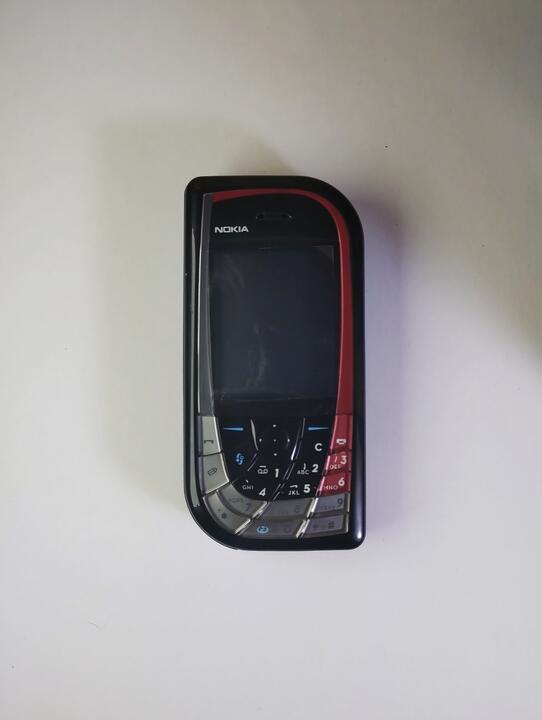Nokia 7610
Status: 🟢 Fully functional
Specs
- Launch date: 2004
- Software platform: Symbian OS 7.0s, Series 60 2nd Edition
- Display: 176 x 208 pixels, 65K colors
- CPU: ARM9 123 MHz
- Connectivity: GSM, GPRS, EDGE, Infrared, USB via Pop-Port
- Storage: 8 MB internal, RS-MMC card (expandable)
- Camera: 1 MP (1152 x 864 pixels)
- Third party apps: Symbian S60 2nd Edition apps
- Internet: WAP 2.0/xHTML, HTML
- Other notable features: Video recorder, MP3/AAC player, photo editor, Java MIDP 2.0
The Nokia 7610 became one of the most recognizable and unusual phones of the early 2000s. Its asymmetrical design with smooth, rounded curves resembled a petal and stood out against the strict, monotonous models of the time. The keyboard looked no less extravagant: its multicolored keys were arranged in an unusual layout that was confusing at first, but gave the device a distinct personality. Adding to its individuality was the ability to easily swap the housing for another with the same shape but a different color scheme — a real find for those who wanted to emphasize their uniqueness.
From a technical standpoint, the Nokia 7610 was a full-fledged smartphone running Symbian Series 60, second edition. It was powered by a TI OMAP 1510 processor clocked at 123 MHz, supported RS-MMC memory cards, and could run a wide variety of applications. It featured a 1-megapixel camera module, which was a serious achievement at the time, along with the ability to record and edit video directly on the phone. Support for MP3 playback and the built-in Movie Editor turned the device into more than just a communication tool — it was a miniature multimedia center.
I first encountered this phone at university — it belonged to a classmate who let me tinker with its settings. Together we installed useful software: an ICQ client for chatting, a video player for watching clips, and several simple utilities that transformed the 7610 into a versatile tool for both studying and leisure. The very fact that such a bold-looking device hid a mature Symbian operating system underneath left a strong impression.
In the end, the Nokia 7610 became something of a symbol of its era: a combination of daring, almost avant-garde design and true smartphone functionality made it the phone for those who wanted to stand out while staying at the forefront of technology. Today, it stands as a vivid example of how Nokia experimented with form while simultaneously paving the way for future mobile platforms.
🇺🇦 HELP US HELP OTHERS, SAVE ANIMALS IN UKRAINE
Site map | Powered by crew | © 2025 TiredSysadmin
All photos from Vintage Cellphone and PDA Museum by TiredSysadmin are licensed under Creative Commons Attribution-NonCommercial-ShareAlike 4.0 International.

